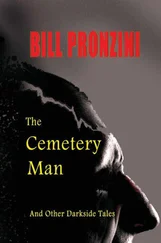Oliver Sacks - The Man Who Mistook His Wife For A Hat and Other Clinical Tales
Здесь есть возможность читать онлайн «Oliver Sacks - The Man Who Mistook His Wife For A Hat and Other Clinical Tales» весь текст электронной книги совершенно бесплатно (целиком полную версию без сокращений). В некоторых случаях можно слушать аудио, скачать через торрент в формате fb2 и присутствует краткое содержание. Город: New York, Год выпуска: 1970, ISBN: 1970, Издательство: Harper Collins, Жанр: Психология, на английском языке. Описание произведения, (предисловие) а так же отзывы посетителей доступны на портале библиотеки ЛибКат.
- Название:The Man Who Mistook His Wife For A Hat and Other Clinical Tales
- Автор:
- Издательство:Harper Collins
- Жанр:
- Год:1970
- Город:New York
- ISBN:0-06-097079-0
- Рейтинг книги:5 / 5. Голосов: 1
-
Избранное:Добавить в избранное
- Отзывы:
-
Ваша оценка:
- 100
- 1
- 2
- 3
- 4
- 5
The Man Who Mistook His Wife For A Hat and Other Clinical Tales: краткое содержание, описание и аннотация
Предлагаем к чтению аннотацию, описание, краткое содержание или предисловие (зависит от того, что написал сам автор книги «The Man Who Mistook His Wife For A Hat and Other Clinical Tales»). Если вы не нашли необходимую информацию о книге — напишите в комментариях, мы постараемся отыскать её.
The Man Who Mistook His Wife For A Hat and Other Clinical Tales — читать онлайн бесплатно полную книгу (весь текст) целиком
Ниже представлен текст книги, разбитый по страницам. Система сохранения места последней прочитанной страницы, позволяет с удобством читать онлайн бесплатно книгу «The Man Who Mistook His Wife For A Hat and Other Clinical Tales», без необходимости каждый раз заново искать на чём Вы остановились. Поставьте закладку, и сможете в любой момент перейти на страницу, на которой закончили чтение.
Интервал:
Закладка:
For what is it that constitutes a ‘disease entity’ or a ‘new disease’? The physician is concerned not, like the naturalist, with a wide range of different organisms theoretically adapted in an average way to an average environment, but with a single organism, the human subject, striving to preserve its identity in adverse circumstances.
This dynamic, this ‘striving to preserve identity’, however strange the means or effects of such striving, was recognised in psychiatry long ago—and, like so much else, is especially associated with the work of Freud. Thus, the delusions of paranoia were seen by him not as primary but as attempts (however misguided) at restitution, at reconstructing a world reduced by complete chaos. In precisely the same way, Ivy McKenzie wrote:
The pathological physiology of the Parkinsonian syndrome is the study of an organised chaos , a chaos induced in the first instance by destruction of important integrations, and reorganised on an unstable basis in the process of rehabilitation.
As Awakenings was the study of ‘an organised chaos’ produced by a single if multiform disease, so what now follows is a series of similar studies of the organised chaoses produced by a great variety of diseases.
In this first section, ‘Losses’, the most important case, to my mind, is that of a special form of visual agnosia: ‘The Man Who Mistook His Wife for a Hat’. I believe it to be of fundamental importance. Such cases constitute a radical challenge to one of the most entrenched axioms or assumptions of classical neurology—in particular, the notion that brain damage, any brain damage, reduces or removes the ‘abstract and categorical attitude’ (in Kurt Goldstein’s term), reducing the individual to the emotional and concrete. (A very similar thesis was made by Hughlings Jackson in the 1860s.) Here, in the case of Dr P., we see the very opposite of this—a man who has (albeit only in the sphere of the visual) wholly lost the emotional, the concrete, the personal, the ‘real’ . . . and been reduced, as it were, to the abstract and the categorical, with consequences of a particularly preposterous kind. What would Hughlings Jackson and Goldstein have said of this ? I have often in imagination, asked them to examine Dr P., and then said, ‘Gentlemen! What do you say now?’
1. The Man Who Mistook His Wife for a Hat
Dr P. was a musician of distinction, well-known for many years as a singer, and then, at the local School of Music, as a teacher. It was here, in relation to his students, that certain strange problems were first observed. Sometimes a student would present himself, and Dr P. would not recognise him; or, specifically, would not recognise his face. The moment the student spoke, he would be recognised by his voice. Such incidents multiplied, causing embarrassment, perplexity, fear—and, sometimes, comedy. For not only did Dr P. increasingly fail to see faces, but he saw faces when there were no faces to see: genially, Magoo-like, when in the street he might pat the heads of water hydrants and parking meters, taking these to be the heads of children; he would amiably address carved knobs on the furniture and be astounded when they did not reply. At first these odd mistakes were laughed off as jokes, not least by Dr P. himself. Had he not always had a quirky sense of humour and been given to Zen-like paradoxes and jests? His musical powers were as dazzling as ever; he did not feel ill—he had never felt better; and the mistakes were so ludicrous—and so ingenious—that they could hardly be serious or betoken anything serious. The notion of there being ‘something the matter’ did not emerge until some three years later, when diabetes developed. Well aware that diabetes could affect his eyes, Dr P. consulted an ophthalmologist, who took a careful history and examined his eyes closely. ‘There’s nothing the matter with your eyes,’ the doctor concluded. ‘But there is trouble with the visual parts of your brain. You don’t need my help, you must see a neurologist.’ And so, as a result of this referral, Dr P. came to me.
It was obvious within a few seconds of meeting him that there was no trace of dementia in the ordinary sense. He was a man of great cultivation and charm who talked well and fluently, with imagination and humour. I couldn’t think why he had been referred to our clinic.
And yet there was something a bit odd. He faced me as he spoke, was oriented towards me, and yet there was something the matter—it was difficult to formulate. He faced me with his ears , I came to think, but not with his eyes. These, instead of looking, gazing, at me, ‘taking me in’, in the normal way, made sudden strange fixations—on my nose, on my right ear, down to my chin, up to my right eye—as if noting (even studying) these individual features, but not seeing my whole face, its changing expressions, ‘me’, as a whole. I am not sure that I fully realised this at the time—there was just a teasing strangeness, some failure in the normal interplay of gaze and expression. He saw me, he scanned me, and yet . . .
‘What seems to be the matter?’ I asked him at length.
‘Nothing that I know of,’ he replied with a smile, ‘but people seem to think there’s something wrong with my eyes.’
‘But you don’t recognise any visual problems?’
‘No, not directly, but I occasionally make mistakes.’
I left the room briefly to talk to his wife. When I came back, Dr P. was sitting placidly by the window, attentive, listening rather than looking out. ‘Traffic,’ he said, ‘street sounds, distant trains— they make a sort of symphony, do they not? You know Honegger’s Pacific 234?’
What a lovely man, I thought to myself. How can there be anything seriously the matter? Would he permit me to examine him?
‘Yes, of course, Dr Sacks.’
I stilled my disquiet, his perhaps, too, in the soothing routine of a neurological exam—muscle strength, coordination, reflexes, tone. ... It was while examining his reflexes—a trifle abnormal on the left side—that the first bizarre experience occurred. I had taken off his left shoe and scratched the sole of his foot with a key—a frivolous-seeming but essential test of a reflex—and then, excusing myself to screw my ophthalmoscope together, left him to put on the shoe himself. To my surprise, a minute later, he had not done this.
‘Can I help?’ I asked.
‘Help what? Help whom?’
‘Help you put on your shoe.’
‘Ach,’ he said, ‘I had forgotten the shoe,’ adding, sotto voce , ‘The shoe? The shoe?’ He seemed baffled.
‘Your shoe,’ I repeated. ‘Perhaps you’d put it on.’
He continued to look downwards, though not at the shoe, with an intense but misplaced concentration. Finally his gaze settled on his foot: ‘That is my shoe, yes?’
Did I mis-hear? Did he mis-see?
‘My eyes,’ he explained, and put a hand to his foot. ‘This is my shoe, no?’
‘No, it is not. That is your foot. There is your shoe.’
‘Ah! I thought that was my foot.’
Was he joking? Was he mad? Was he blind? If this was one of his ‘strange mistakes’, it was the strangest mistake I had ever come across.
I helped him on with his shoe (his foot), to avoid further complication. Dr P. himself seemed untroubled, indifferent, maybe amused. I resumed my examination. His visual acuity was good: he had no difficulty seeing a pin on the floor, though sometimes he missed it if it was placed to his left.
He saw all right, but what did he see? I opened out a copy of the National Geographic Magazine and asked him to describe some pictures in it.
His responses here were very curious. His eyes would dart from one thing to another, picking up tiny features, individual features, as they had done with my face. A striking brightness, a colour, a shape would arrest his attention and elicit comment—but in no case did he get the scene-as-a-whole. He failed to see the whole, seeing only details, which he spotted like blips on a radar screen. He never entered into relation with the picture as a whole—never faced, so to speak, its physiognomy. He had no sense whatever of a landscape or scene.
Читать дальшеИнтервал:
Закладка:
Похожие книги на «The Man Who Mistook His Wife For A Hat and Other Clinical Tales»
Представляем Вашему вниманию похожие книги на «The Man Who Mistook His Wife For A Hat and Other Clinical Tales» списком для выбора. Мы отобрали схожую по названию и смыслу литературу в надежде предоставить читателям больше вариантов отыскать новые, интересные, ещё непрочитанные произведения.
Обсуждение, отзывы о книге «The Man Who Mistook His Wife For A Hat and Other Clinical Tales» и просто собственные мнения читателей. Оставьте ваши комментарии, напишите, что Вы думаете о произведении, его смысле или главных героях. Укажите что конкретно понравилось, а что нет, и почему Вы так считаете.











